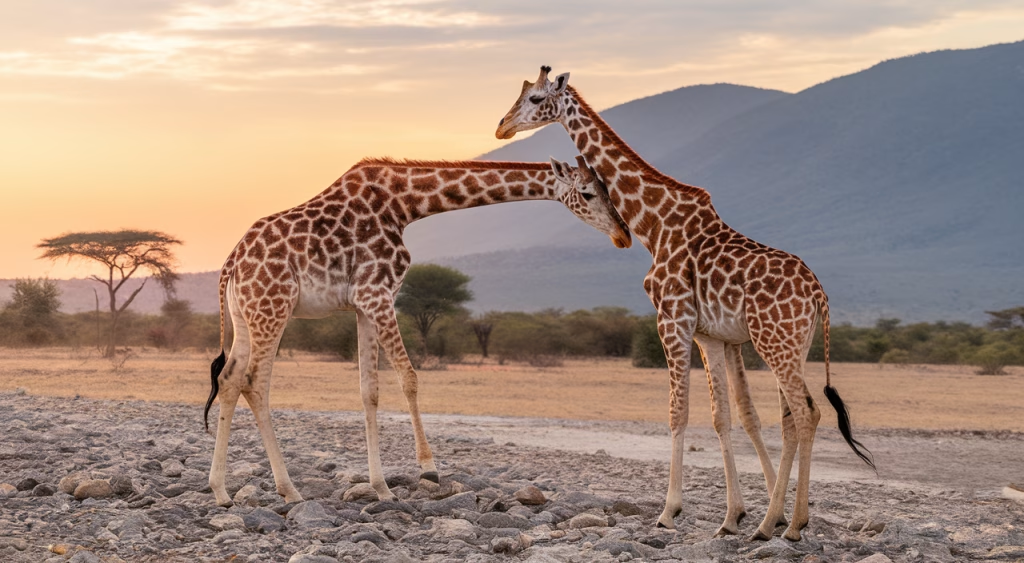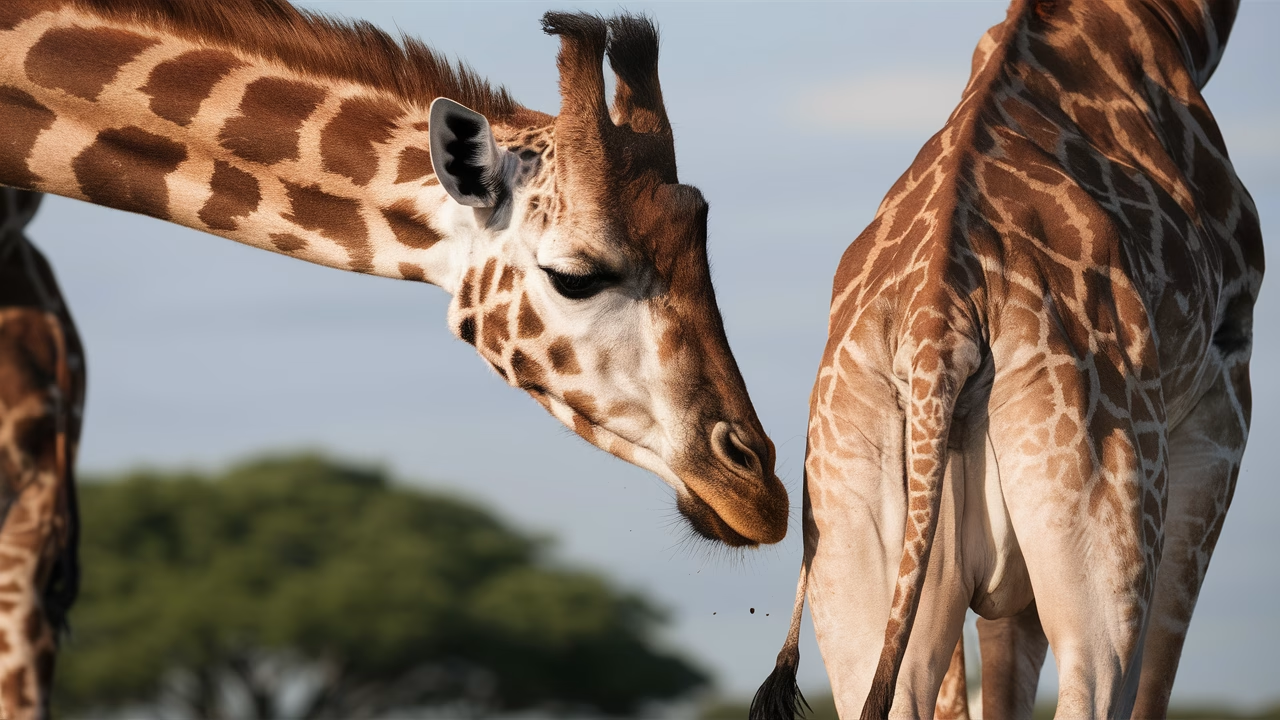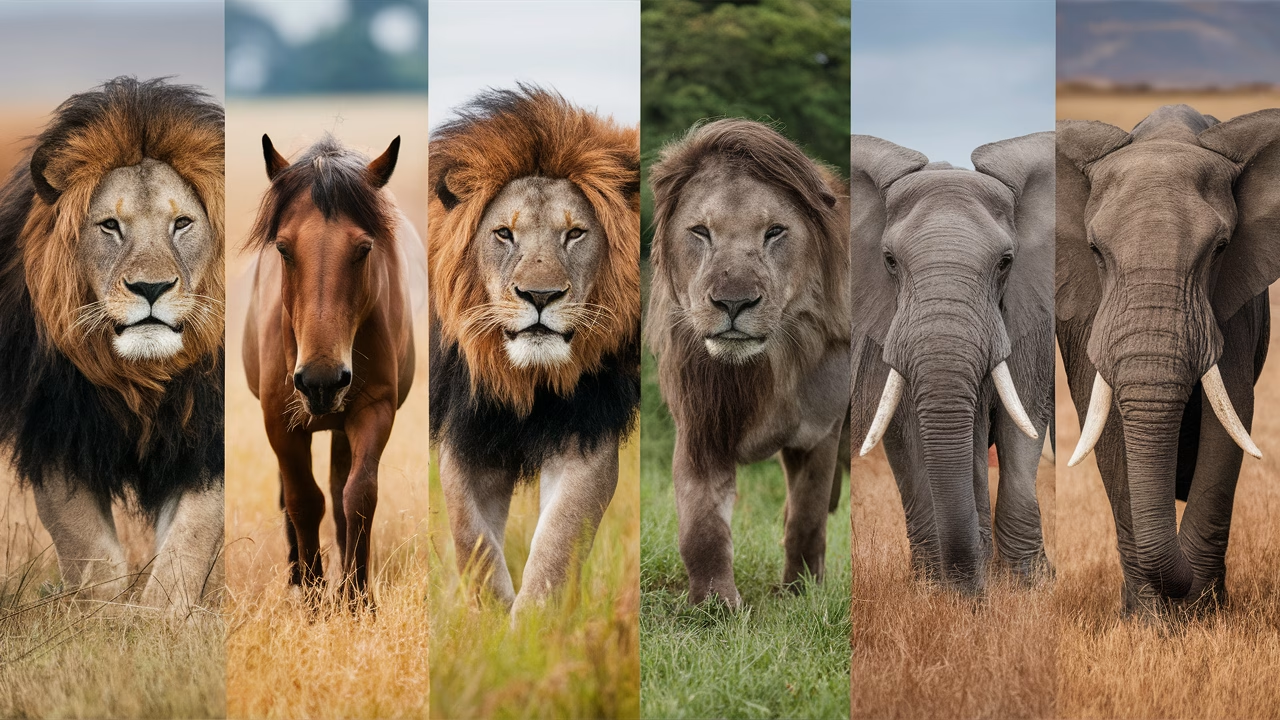Why do male giraffes taste female urine to assess fertility?
Male giraffes taste female urine as a sophisticated fertility detection method. When you observe this behavior in the wild, you’re witnessing nature’s most precise hormone detection system in action. Male giraffes use their tongues to collect and taste female urine to detect hormones indicating fertility. This behavior helps determine if a female giraffe is ready to mate, enabling reproductive success in wild herds.
TL;DR: The Science of Male Giraffes Tasting Female Urine
- Purpose: Male giraffes taste urine to identify if a female is in estrus and ready to reproduce.
- Mechanism: They use the flehmen response, a behavioral reflex involving curling the lips to direct scents to a specialized organ.
- Key Detection: The hormone estrone-3-glucuronide in urine signals ovulation.
- Wider Relevance: Similar behaviors are recorded in other mammals like lions and horses.
- Scientific Insight: Pheromones are powerful chemical messengers—the nose knows when love is in the air.
The Fascinating Flehmen Response
Understanding the Basics
The flehmen response in animals often looks like a quirky facial expression, but it’s actually nature’s chemical analysis system. You’ve likely seen it before—a lion curling its upper lip after sniffing, or a horse appearing to sneer. Behind this odd grimace lies a sophisticated chemical detection mechanism. This behavior directs pheromone-rich scents toward the vomeronasal organ (also known as Jacobson’s organ), located above the roof of the mouth.
In giraffes, the flehmen response is a critical part of giraffe reproduction behaviors. What’s happening isn’t just sniffing—it’s analyzing chemical signals to determine the fertility status of potential mates, particularly in females.
Evolutionary Significance
The flehmen response isn’t exclusive to giraffes; it’s found across several mammalian species. Evolutionarily, it’s a shortcut to reproductive efficiency. In species where visual or behavioral cues might be too subtle, chemical communication steps in. This ‘sniff and taste’ strategy ensures males don’t waste precious energy on courtship attempts with non-fertile partners—a survival advantage that has persisted for millions of years.
The Role of Pheromones in Animal Behavior
How Pheromones Work
Animal pheromones and hormones are nature’s invisible messaging system. They’re chemical substances secreted externally that influence the behavior or physiology of others within the same species. In the animal world, they can trigger everything from alarm responses to intense attraction. When it comes to mating, pheromones communicate what eyes or ears can’t detect: “I’m ready to reproduce.”
For giraffes, these powerful chemical messengers exist in urine and saliva, carrying precise data about hormonal states. When a male giraffe tastes female urine, he’s literally decoding a biochemical fertility report.
Pheromones and Hormonal Cues
The scent composition of a female giraffe’s urine changes dramatically during her reproductive cycle. Of particular interest is the presence of estrone-3-glucuronide, a conjugated estrogen metabolite that signals ovulation is near or currently happening. This animal ovulation hormone acts like a chemical highlighter, telling potential suitors it’s optimal timing for reproduction.
Male Giraffes: The Unconventional Detectives
Why Male Giraffes Taste Female Urine
Here’s what typically happens during this fascinating ritual: a male giraffe approaches a female, sniffs her urinary stream or puddle, then arches his neck, curls his lip, and pauses—opening his mouth slightly to transfer the scent to his vomeronasal organ. While it may not resemble human romance, this behavior is spectacularly effective for reproductive success.
This peculiar ritual isn’t random curiosity—it’s a direct method of detecting animal ovulation hormones. Once the male confirms elevated estrogen levels through this chemical analysis, he’ll decide if energetically costly courtship is worth pursuing. Since mating requires significant energy investment, giraffes need this selective approach to align their reproductive cycles productively.
Implications for Giraffe Reproduction
This sophisticated detection behavior significantly increases reproductive success rates. It minimizes futile mating attempts and maximizes the chances of pairing with a fertile mate during optimal windows. For endangered giraffe populations, every successful birth becomes critically important. Understanding how these giraffe reproduction behaviors function helps conservationists develop more effective captive breeding programs and track fertile female movements in wild herds.
Beyond Giraffes: Other Animal Behaviors
Similar Behaviors in the Animal Kingdom
Giraffes aren’t alone in this scientifically-backed practice. Several mammals engage in the flehmen response in animals for fertility detection:
- Lions: Males routinely smell female genitals or urine during estrus detection in prides.
- Horses: Stallions are renowned for their dramatic flehmen expressions after investigating mare urine.
- Elephants: Bulls regularly test females for hormonal conditions using their sensitive trunks and mouths.
In each case, you’ll find the common thread: detecting animal pheromones and hormones to time reproductive effort with scientific precision. Across species, it demonstrates evolution’s brilliance—chemical cues guiding life-altering reproductive decisions.
The Science Behind Animal Reproduction
Hormones and Ovulation
Reproductive hormones orchestrate every species’ breeding rhythm with remarkable precision. In females, ovulation is marked by a spike in estrogens, initiated by a complex cascade involving follicle-stimulating hormone (FSH), luteinizing hormone (LH), and progesterone. Every step in this process sends chemical markers that can only be detected externally through sophisticated analysis—or through the remarkable sensory abilities of animals using the flehmen response.
When an animal enters estrus—the “heat” or peak fertility period—its entire body chemistry reflects this change. While these changes aren’t visually obvious, chemical monitoring like the male giraffe’s urine tasting behavior makes fertility status crystal clear.
The Significance of Estrone-3-Glucuronide
This compound, estrone-3-glucuronide, is a hormone metabolite found in urine that powerfully indicates ovulation timing. In research studies tracking ungulate fertility, scientists measure this hormone to predict optimal breeding windows with remarkable accuracy. For wild male giraffes, this animal ovulation hormone functions as a green light—an internal fertility beacon broadcast externally through urine.
Its presence helps answer the critical reproductive question: Is this female receptive to mating right now? Thanks to millions of years of evolution and refined chemical detection abilities, male giraffes rarely miss this crucial fertility cue.
Final Thoughts: What Can We Learn from Giraffe Reproduction?
The behavior of male giraffes tasting female urine may appear strange, even amusing, to human observers. But behind this action lies an evolutionary masterpiece—precision, biology, and behavior fused into one extraordinary moment of species continuation. For those studying nature, it serves as a powerful reminder that survival doesn’t always announce itself dramatically. Sometimes, it simply requires the ability to detect chemical whispers and respond to hormonal signals carried on the wind.
Frequently Asked Questions
- Do all male giraffes use the flehmen response?
- Yes, especially sexually mature males. It’s a standard way to detect female fertility.
- What hormone do male giraffes detect in female urine?
- Estrone-3-glucuronide—a metabolite indicating the female is ovulating.
- Is the flehmen response unique to giraffes?
- No, it’s found in many mammals including horses, lions, and antelope.
- Why do male giraffes stick out their tongues?
- To collect female urine for tasting and scent evaluation. It helps assess reproductive readiness.
- How does this behavior benefit giraffe populations?
- It ensures more efficient mating, fewer wasted attempts, and strengthens generational survival through targeted reproduction.
- Can scientists use this behavior in conservation?
- Absolutely. Monitoring mating cues and hormone levels helps in breeding and population studies.





